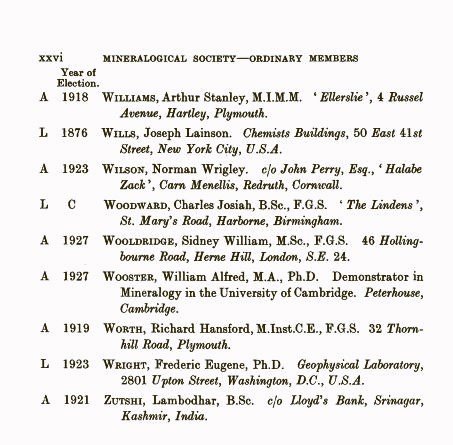(By: Bhushan Parimoo*)
In the late hours of November 16, 1896, the serene night in Chinkral Mohalla, Srinagar, was pierced by anxious whispers and fervent prayers. The household of the late Pandit Mukund Ram Zutshi was abuzz with nervous anticipation as Vishmal Dar, lovingly known as Kisser Ded, endured the trials of labour. As dawn approached, a cry heralded the arrival of a boy, Lambodhar, named after Lord Ganesha. This child was destined to become a beacon of science and intellect for the Kashmiri Pandit community, and a figure whose influence would transcend borders.
An Astrological Foretelling
The family’s astrologer, Pandit Nila Kanth Razdan, predicted that Lambodhar would lead a life of distinction and brilliance. However, his future would not be tied to his birthplace. This prediction came to pass as Lambodhar spent most of his life in England, where he passed away on January 14, 1964. His journey from the alleys of Srinagar to the scientific halls of London was nothing short of extraordinary.
The Zutshi Family: A Legacy of Service and Resilience
Lambodhar hailed from a family deeply entrenched in service and duty. His father, Pandit Mukund Ram Zutshi, and uncle, Pandit Tota Ram Zutshi, were stalwarts in the police department. Mukund Ram was revered as an efficient investigator, while Tota Ram was noted for his skill in drafting mercy petitions that often spared the lives of condemned prisoners. Their dedication to justice earned them a formidable reputation in Srinagar.
However, the family faced a severe setback in 1840 when a great fire ravaged their home. Undeterred, they rebuilt their lives and continued their service to the community. The new home they constructed stood as a testament to their resilience and became the birthplace of Lambodhar, a new era’s beacon.
Early Signs of Genius
From a young age, Lambodhar exhibited an insatiable thirst for knowledge. His academic journey began at Babapora Middle School, where he topped his Primary School Examination. By 1911, he had completed his Matriculation at the State High School at Dilawar Khan Bagh, Fateh Kadal, emerging as the top student in Kashmir Province.
His family employed innovative methods to support his studies. A chord was tied to his clothes to jolt him awake whenever he nodded off while studying. Additionally, he was given a mixture of Brahmi powder and molten ghee to sharpen his memory. These early signs of his brilliance were just the beginning of a lifelong pursuit of knowledge.
Academic Excellence and Ventures Abroad
Lambodhar’s academic prowess led him to Prince of Wales College in Jammu (now Gandhi Memorial College of Science), where he graduated with honors in Physics in 1919, topping Punjab University. His mentors included eminent scientists like Dr. Vidya Sagar Puri and Dr. Shanti Swaroop Bhatnagar. While in Jammu, Lambodhar’s leadership was evident as he founded the Dogri Youngman’s Association, advocating for the rights of the State Subjects.
In 1921, Lambodhar’s brilliance earned him a scholarship to study Mining Engineering in England. He excelled at the Royal School of Mines, Imperial College of Science, London, where he earned prestigious qualifications: A.R.S.M in Mining and Geology, A.M.I.M.M, and F.G.S. Despite returning to Kashmir in 1923, he found limited opportunities and soon returned to England in 1925.

Love for Kashmir Amidst Western Success
Lambodhar’s connection to Kashmir was unbreakable. In 1927, he returned to Kashmir with aspirations to contribute to its development. Appointed as an engineer with a salary of Rs. 600 per month, he quickly became disillusioned with the lack of support for his mineral development proposals. He resigned in 1929 and went back to England, where his scientific and entrepreneurial ventures flourished.
Throughout his career, Lambodhar engaged in numerous ventures across continents. He worked on excavating the Sapphire mine in Neelam, navigating the treacherous terrain to transport mineral ore on mule backs. He was also involved in various mining and property enterprises, including the formation of Zutshi Park Properties Ltd. in 1936 and consulting roles in England.
A Family Rooted in Tradition and Progress
Lambodhar’s personal life was intertwined with his professional pursuits. At 15, he married Radha Mal Khazanchi, with whom he had a son, Nandlal Zutshi, born on Janamashtmi in 1929. Nandlal followed in his father’s footsteps, becoming a distinguished figure as Dr. Nandlal Zutshi, the President of the Kashmiri Pandit Association Mumbai, and All India Kashmiri Samaj. Lambodhar later remarried Eileen Lord in England, with whom he had two sons, Dr. Derek Hariram and Dr. Trevor Shankerlal.
After Eileen’s passing in 1944, Lambodhar again married—this time Molly Mancrief, a woman of letters and an occultist. Together, they had a daughter, Mavis Zutshi. Despite his personal losses and multiple marriages, Lambodhar maintained a deep connection to his Kashmiri roots, which influenced his family’s diverse paths across the globe.
Contributions to Kashmir and Beyond
Lambodhar’s contributions to Kashmir were significant, even from afar. He submitted numerous projects for the region’s industrial and mineral development. In 1938, he proposed a scheme for manufacturing Portland cement and received a hero’s welcome upon his return to Srinagar. Despite logistical challenges, his efforts were driven by a deep love for his homeland.
In England, Lambodhar was instrumental in supporting the Indian diaspora. He founded the Kashmir Association for Great Britain and Europe and played a key role in establishing the Hindu Centre in London. During the 1962 Sino-Indian War, he organized support for India and met with Prime Minister Jawaharlal Nehru to discuss the strategic importance of Aksai Chin.

The Multifaceted Life
Lambodhar Zutshi, while celebrated for his scientific achievements and contributions to the industrial landscape, possessed a rich tapestry of interests and talents that extended beyond his professional endeavors. Among his many pursuits was his proficiency in Urdu, which he wrote with a distinctive flair and an elegant, calligraphic hand. His writings in high Urdu were marked by typical expressions that conveyed both depth and artistry, reflecting his cultured background and intellectual versatility.
A Devotion to Tradition and Culture
Lambodhar’s commitment to cultural traditions was evident in his actions and engagements. As a gazetted officer, he participated in the grand Deshra celebrations, a significant event in the princely state of Jammu and Kashmir. During the Darbar ceremony, he presented a “Nazarana” of one pound to Maharaja Hari Singh, a gesture symbolizing respect and allegiance to the ruler. This act not only highlighted his adherence to tradition but also his status and recognition within the courtly circles of the time.
Anecdotes and Mysticism: The Amarnath Yatra Experience
In 1928, shortly after returning from England, Lambodhar joined his father, Mukund Ram, on a pilgrimage to the sacred Amarnath Cave, an experience steeped in spirituality and mysticism. Mukund Ram, then on official duty for managing the Yatra (known as ‘bandobast’ duty), accompanied his son and a Sanyasi, a revered ascetic known to their family.
During their camp at Chandanwari, an incident occurred that remains etched in the family’s lore. The Sanyasi shared with Lambodhar an intriguing tale of alchemy. He claimed that the ancient science of transforming base metals into gold was known in India for centuries. However, ethical principles forbade its exploitation for personal gain.
Intrigued by the Sanyasi’s claim, Lambodhar accompanied him into the jungle, where the Sanyasi gathered a few leaves from a plant. Back at the camp, the Sanyasi crumbled the leaves into his palm and asked for a copper coin. He covered the coin with the leaves and encased it in mud from the riverbank. The concoction was then baked in a ‘Dhoni,’. After several hours of heating, they cracked open the baked mass, revealing a transformed gold coin. This mystical event fascinated Lambodhar, adding a layer of wonder and curiosity to his already inquisitive nature.
A Legacy Beyond Science
Lambodhar’s life was a blend of rigorous scientific pursuit and a deep engagement with his cultural and mystical heritage. His ability to navigate between the empirical world of mining and the mystical narratives of his culture showcases a unique duality. This blend of modern science and ancient wisdom was a hallmark of his personality, influencing his approach to both life and work.
Through these stories and anecdotes, Lambodhar Zutshi’s legacy is painted not just as a pioneering scientist but as a man deeply rooted in his heritage, respectful of tradition, and ever curious about the mysteries of the world. His multifaceted life continues to inspire, reminding us of the rich and diverse paths that a life of inquiry and dedication can encompass.
Lambodhar Zutshi’s legacy is also a testament to his pioneering spirit and dedication to both science and society. His expertise in mining and geology, coupled with his entrepreneurial ventures, made him a notable figure in both Kashmir and England. He maintained close ties with influential leaders, advocating for Kashmir’s development and supporting its people through various initiatives. Despite living most of his life in the West, Lambodhar’s heart always lay in Kashmir. His story is a rich tapestry of intellectual pursuit, cultural dedication, and a relentless drive to uplift his community. Lambodhar Zutshi remains a revered icon among Kashmiri Pandits and a beacon of inspiration for future generations
*Bhushan Parimoo is a Jammu based environment, conservationist and ecology expert. He can be reached at: blparimoo@gmail.com

